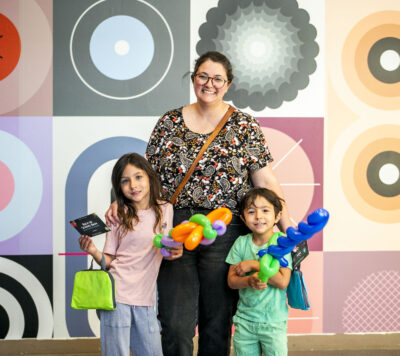In regions where blistering sunlight and low humidity define the seasons, homeowners are rethinking how they approach indoor comfort. Gone are the days when HVAC systems were hidden utilities, meant to function in the background without design consideration. Today, especially in warm, arid zones, climate control has become a central feature of both interior design and lifestyle planning. Homeowners are blending high-efficiency air systems with architecture that reflects the sleek, earthy aesthetics of the “Desert Modern” movement.
This approach prioritizes more than just cooling—it embraces harmony between form and function. Open floor plans, minimalistic lines, and nature-inspired materials create a canvas where HVAC systems must work in sync with design rather than against it. The result is a living space that feels natural, breathable, and effortlessly stylish, all while staying remarkably energy-efficient. This shift marks a new era in residential living—where comfort is both a technical achievement and a visual statement.
Invisible Air: Integrating HVAC into Modern Architecture
Modern architecture in dry climates celebrates space, light, and openness. However, this design philosophy challenges traditional HVAC installations, which often disrupt visual flow with bulky units and exposed ductwork. That’s why homeowners and designers are embracing subtle yet powerful solutions. Ductless mini-split systems, slim-profile vents, and ceiling-mounted diffusers are becoming staples in homes that value design as much as function.
According to one hvac company, rather than hiding the HVAC system after the fact, new construction and renovations now involve HVAC planning from the earliest stages. Designers are collaborating with air system professionals to ensure the placement of vents, thermostats, and units aligns with the overall aesthetic. Flush grilles, hidden returns, and coordinated colors allow climate control features to virtually disappear into their surroundings. This attention to detail transforms air management into an almost invisible presence—one that contributes to the room without distracting from its design integrity.
Smart Climate, Smart Living: The Digital Evolution of Comfort
Smart technology has revolutionized the way we interact with our homes, and HVAC systems are no exception. In hot, dry regions where temperature fluctuations can be extreme, the ability to automate and personalize cooling settings is a game-changer. Smart thermostats, AI-powered zoning systems, and mobile-controlled units allow residents to maintain optimal comfort with minimal effort—all while reducing energy waste.
These systems learn user behavior over time, adjusting airflow and temperature automatically based on usage patterns and external conditions. Whether it’s cooling down a room just before someone arrives or shutting off air in unoccupied areas, smart HVAC technology promotes both comfort and sustainability. This is especially important in desert-adjacent areas where overuse of energy can strain local grids. With these advancements, homeowners are not just cooling their homes—they’re optimizing their environment with precision and intelligence.
Indoor-Outdoor Flow: Designing Air Around Open Living
One of the most beloved features of desert and arid-region architecture is the seamless transition between indoor and outdoor living. Expansive sliding glass doors, covered patios, and breezeways invite the outdoors in—but they also create challenges for maintaining consistent indoor temperatures. HVAC design must now consider these blurred boundaries and find ways to accommodate shifting airflow and exposure.
Innovative systems are rising to the occasion. Zoned air distribution, occupancy sensors, and variable-speed compressors help regulate areas that are exposed to frequent door openings or partial enclosure. Meanwhile, architectural elements like retractable shades and vented overhangs are being combined with mechanical systems to create a hybrid approach to cooling. This integration ensures that homeowners can enjoy the beauty and utility of open-air living without sacrificing indoor comfort or efficiency.
Zoned for Function: Meeting the Needs of Modern Lifestyles
Homes in warm, dry climates are no longer simple in function—they are dynamic environments. Families now expect their homes to support a variety of uses: remote work, exercise, hospitality, and relaxation. Each space has unique cooling needs, and uniform air conditioning no longer cuts it. That’s where zoned HVAC systems come in, allowing homeowners to tailor their indoor climate room by room.
Whether it’s keeping a home office crisp and cool during the day or maintaining a guest suite at a slightly warmer temperature, zoning gives unprecedented control. Homeowners can save energy by directing air only where it’s needed, and everyone in the household can enjoy personalized comfort. This is particularly valuable in multi-story homes or properties with sun-facing exposures, where temperature discrepancies are common. Zoned systems ensure that every corner of the house meets the needs of its users—without compromise.
Conclusion: Style, Sustainability, and the Future of HVAC Design
As architecture evolves in hot, arid climates, HVAC design is evolving right alongside it. The days of treating climate control as an afterthought are over. Instead, modern homeowners are embracing air systems that enhance their aesthetic, respond to their routines, and support their vision for sustainable living. HVAC has become an integral part of how homes are conceived, built, and experienced.
By integrating smart systems, invisible features, and zoned comfort into design-forward homes, today’s air solutions are more than just tools for temperature control—they’re tools for better living. In this intersection of style and sustainability, comfort has found its place as both a luxury and a necessity. And as design sensibilities shift toward open, breathable, and beautifully functional spaces, HVAC stands ready to deliver air that not only cools—but inspires.






